Listening continued
Fostex TH-900
Luckily, the flagship Fostex also had a chance to take part in testing iDSD, so I could refresh my memory. And the memory is telling me that if anyone has any doubts about the usefulness of iUSB3.0, they should try these headphones. Wonderful! – and it’s not an exaggeration. I know – iDSD costs two thousands, iUSB similarly and the cable to connect them almost a thousand. But on the other hand, it is a complete set including cables and a transducer with the best clock, so not just an amplifier. And this set is playing so good that it keeps amazing me. Especially with these Fostex. Perhaps once NightHawk and Grado have the same number on their counters, I will be able to say that they play equally well. But at present, the Japanese drivers closed in a raspberry housing covered with urushi lacquer are winning. For the first time the ifi set could achieve its full musicality, and the depth of sound, magnitude of scene and overall energy were really paralysing. By this time I should have learnt that small devices can do much, but I have never heard them do so well. Well, maybe not completely, because the whole ifi stereo set was of astonishing quality, and this can be supported with iSB3.0 as well, instead of iUSBPower, which bodes well. To be honest, I don’t even feel like analysing the sound in all details, but the word “fantastic” should be enough. The show is so good that it makes you think the equipment must be really expensive. If someone put these headphones on my head and asked me to guess, I would say it must be some new transistor amp worth several thousands. The music was bustling, effervescing, sparkling – all this in 3D, with full sumptuousness and the energy of a steam hummer. Two little motherfuckers, and they play like magic…
I couldn’t find anything to complain about. Admittedly, there was no sweetness or seductiveness like with tubes, but the depth of sound, constant restlessness and most of all the illusion of reality together with energy constantly flowing from everywhere were truly overpowering. It is amazing, really amazing. Just for your interest I can add that when playing Immigrant Song, it wasn’t the bass guitar (like with Grado GS1000) to be the most prominent, but the drums. The closed-back drivers gave them even more power and made them roll like a thunder.
Audeze LCD-3 (FAW Noir Hybrid cable)
The flagship Audeze model, the one which price has gone up recently, causing loud protests among audiophiles, also showed a different style of iDSD accompanied by iUSB instead of iUSBPower. It wasn’t only more energetic, which was the case with all the previous models, but also the show was quite different. The music wasn’t any longer calm and somewhat detached, but rather direct, powerful and clear. In general, they weren’t as good as Fostex, but they had equally analogue character and musicality, although they were a bit more modest when it comes to dynamics and bass. These classic planar headphones, the ones produced before the revolution started by OPPO, have their basic needs when it comes to power supply, and the power of about 2 Watts is vital for them. Better power supply provided by iDSD caused that the headphones were livelier, had more pronounced trebles and were faster. But it couldn’t give them the positive energy or powerful bass, which Audeze is famous for. They sounded better when it comes to reality, but it was like sitting on the fence between a purely relaxing sound and a sound that is explicitly energetic and realistic. It was good, but not exciting in any aspect. Especially in comparison to Fostex which I tested a moment ago.
Final Sonorous X
With the flagship Final Audio, coming back to the heights of explosive sound was immediate. These babies don’t need much power to achieve their full strength, and you can notice that right away. And because they have a closed-back construction, just like Fostex, the bass is explosive, and the pulsing came back with full power, and the cloud of bustling energy was there.
After so many rendezvous with them, I guess I don’t have to add that the details were perfect, and they were accompanied by unique foam on sounds. As if the details were tearing away some tiny music particles and were carrying them on like sea breeze. It gave the effect of exceptionally sophisticated trebles, but was also interfering with overall show integrity, to which common headphones users are used. – There was a characteristic sound dispersing element and a silver cloud of particles dancing among perfect transparency, which had a considerable impact on the reception, making it very unique. These headphones are extraordinary and different from any other – you can either love them or hate them. Anyway, the depth of sound is astounding and they create a unique musical experience, which was very well showed by the little-sized but high-class ifi.
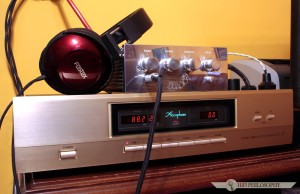
In practice, all this works surprisingly well. And not only DAC from ifi can use the advantages coming from iUSB3.0.
Final Audio Piano Forte IX
It would be a lie to say that these headphones didn’t sound excellent. Perhaps they weren’t as amazing as the full-size Sonorous X, and they didn’t have as much energy, but they surely had a reverb style and the clarity and overall music presentation was of high-end quality. Here again the clarity dominated, even though I couldn’t notice the flowing air pumped into each sound, but the space was big, with distant echo, and everything was transparent and easily distinguishable. There was no trace of excess warmth or sweetness, but it wasn’t either cold nor with technical traces. Having tested all series of headphones characterized by superb musicality, at first I didn’t even notice that this model has it too. You can even say that it is the only one that is more smooth rather than rough. The foreground is considerably moved back, but realistic and clear – most of all clear. No trace of dimness or pushing anything into shadows. The shading, that of a kind that is improving plasticity – was of course there – but nothing was hidden or understated. Smoothness was decorated with reverb, with each note clear and distinct. Huge space and bounce, only the bass and vibration were noticeably worse than in the case of circumaural headphones. But still, the sound is great.
With Accuphase DC-37 and Transrotor
No one ever said that iUSB3.0 must use only ifi accessories. Quite the contrary, just like the previous time I was using iUSBPower and dual Gemini cable with everything, now I could replace it with iUSB3.0 with the same cable, and the point was to see what this replacement would do. And I must admit that the new audio improving toy does what it promises and the eight paths of improvements are definitely better than three (including grounding). This expensive set helped music achieve a more analogue character, sound deeper and more subtle. It was also more energetic, with significantly stronger bass. All sounds were fuller and more pronounced, and a slight tension was only improving it. Again, the first prize goes to Fostex, which got rid of coldness and reverb (they often have such qualities), and their analogue character was emphasized the most. To a different degree this can be said about all models, so I won’t describe all the details. Let me just say that both NighHawk and Grado GS1000 were noticeably more analogue compared to the set without iUSB. The strict criterion was an interconnect between the transducer and amp, where I plugged an extremely demanding, resulting in unbelievable transparency, Crystal Cable Absolute Dream.

Some people don’t believe in such things, but for us it’s not a matter of belief, but rather empirical feelings, which make us recommend this amazing device with all our hearts!
Its analogue character is not as pliant as in Sulek, it perfectly shows all the rumble, pitches and other imperfections of the connected devices. As a result, listening to computer files with it can be hardship. But iUSB3.0 has managed to fix that, and all the headphones were able to play analogue this time. Even though Transrotor amp is more transparent than sweetening and Accuphase transducer, whenever something is wrong, produces excessive reverb and sounds strange as a result, which Transrotor together with Crystal Cable have no intention of hiding. However, with iUSB this didn’t occur, even though it was there with iUSBPower. With the latter, only good files could be tested in analogue, and not with all headphones. Well – now I can only admit that iUSBPower will have to step aside, and it goes without saying that iUSB3.0 will replace it. For now I have to give this toy to other reviewers, but I’m going to get it back, no matter what.
I need to add that of course Accuphase-Transrotor duet was more sophisticated and better in every aspect compared to iDSD alone, but taking into consideration that it costs twenty times more (not to mention the bloody interconnect for ten thousand Euro), it is no surprise. But if you think that iDSD can’t hold a candle to this expensive stuff, then you are wrong.









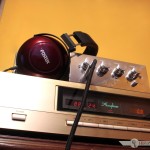
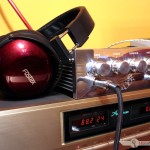
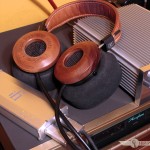
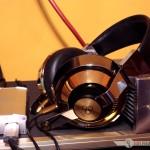



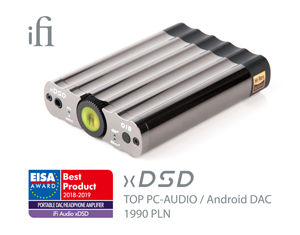
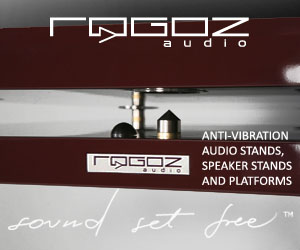

Ponieważ nie ma jeszcze forum, pozwolę sobie w tym miejscu napisać coś całkiem nie na temat, ale za to o najbardziej bieżącej sprawie muzycznej. Posłuchałem przez odrobinkę , dosłownie po kilkanaście sekund, dziesiątki finalistów Konkursu Chopinowskiego. Moim zdaniem najlepiej prezentują się Dymitr Szyszkin (różnie jego nazwisko piszą), Georgijs Osokins i Eric Lu.
My z żoną rano słuchaliśmy za to Anne-Sophie Mutter z sonatami Mendelssohna w TVP Kultura (na marginesie czasem dobrze mieć podłączony DAC do TV) na wieczór za to już zabrakło sposobności czasowej.